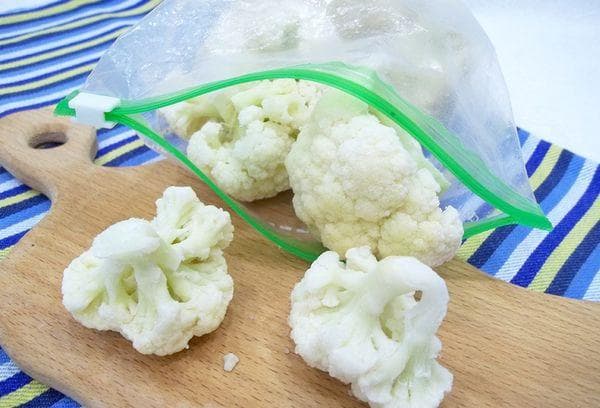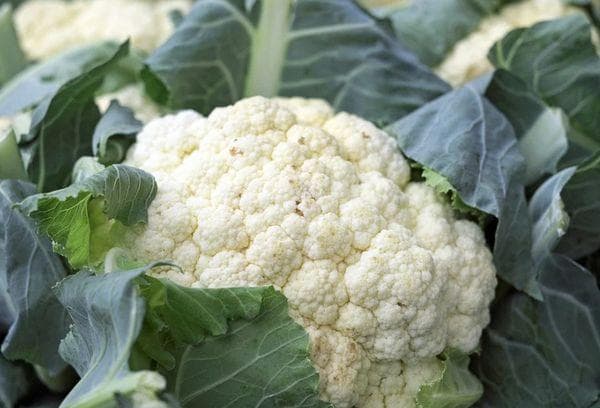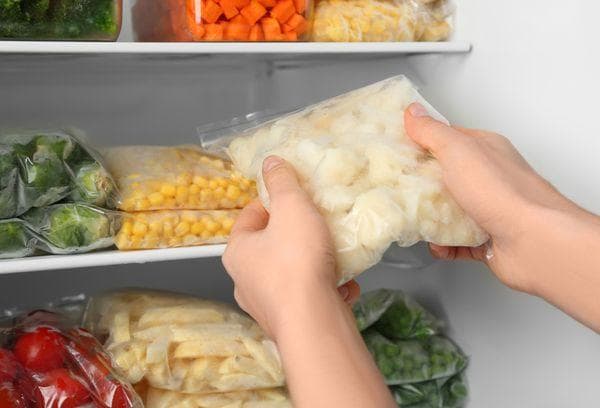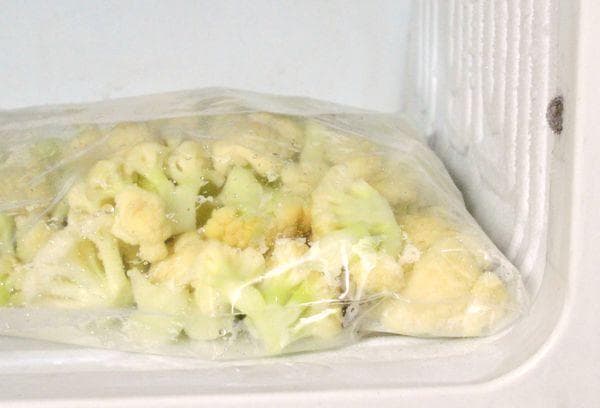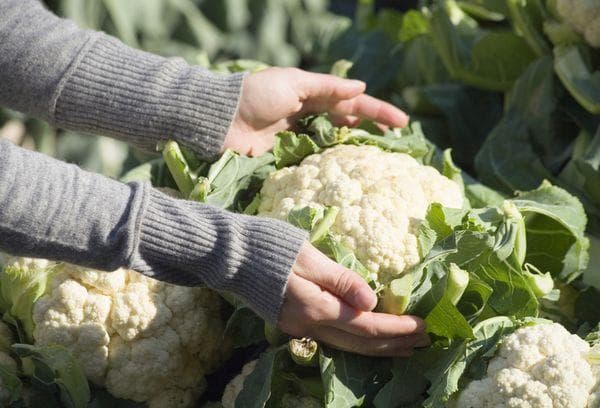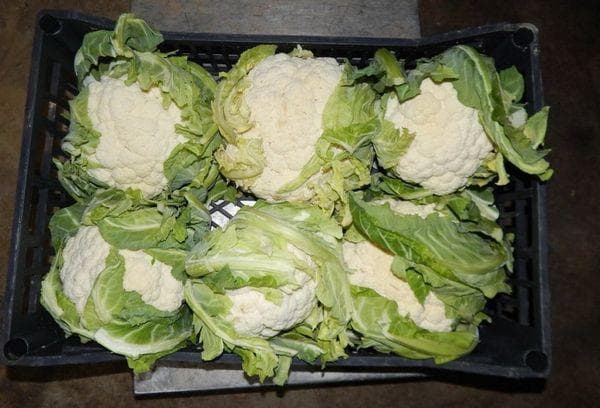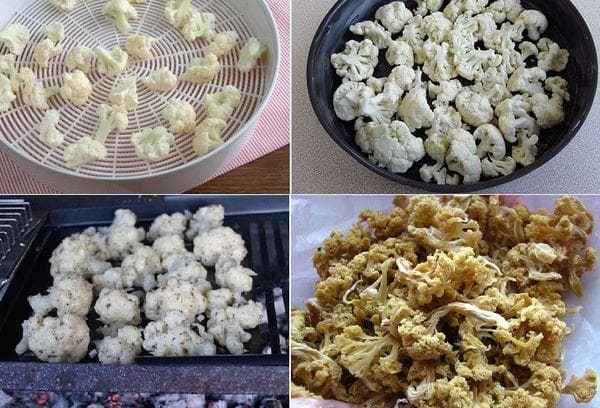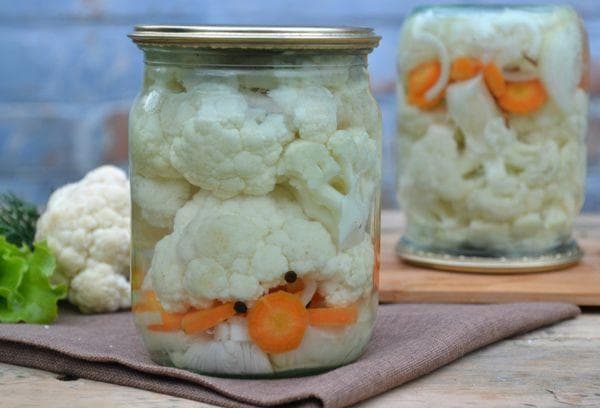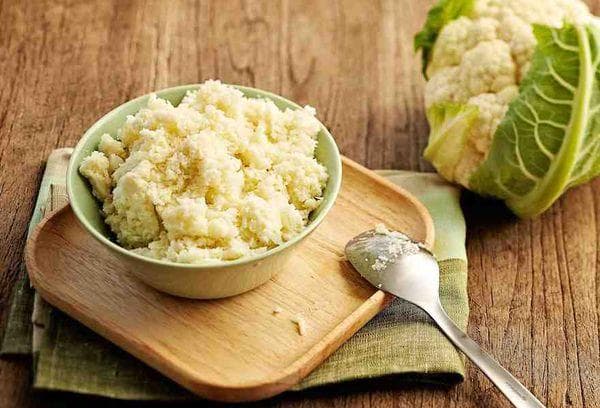Where and how best to store cauliflower at home - 8 ways and tips
Content:
Only late-ripening vegetables are suitable for long-term storage. You can store cauliflower for several months if you create the right environment for it. Summer residents use a variety of options for this purpose, pursuing one goal - to keep the heads of cabbage fresh for as long as possible. In addition, cabbage can be dried and canned.
Preparing heads of cabbage for long-term storage
Before storing, the crop must be sorted. Heads of cabbage with signs of spoilage and damage will not last long. High-quality cauliflower does not have any traces of rot or dark spots.
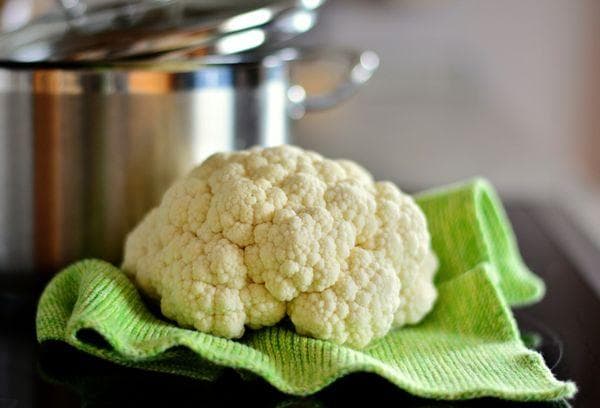
Fully ripened heads of cabbage should acquire some looseness. To begin with, they are cleaned by cutting off the roots and leaves. Further preparation depends on the storage method. For example, if you plan to keep cauliflower in the freezer, lightly boil it first.
Necessary storage conditions
The optimal storage temperature is 0-4° C, humidity is 85-90%. The shelf life is affected not only by the conditions and characteristics of the cabbage variety, but also by the degree of maturity. It is better not to let the vegetable overripe, otherwise its shelf life will decrease.
Interestingly, according to the previously approved GOST, cauliflower was supposed to be stored for 60 days under optimal conditions. A little later, regulations were adopted allowing storage for 80 days. This became possible due to the fact that breeders developed new varieties of crops with increased shelf life.
Which varieties are best stored?
When choosing a variety for planting, you should pay attention to the length of the growing season, since the shelf life of the crop depends on this indicator. Early varieties of cauliflower are usually grown for quick consumption; even in suitable conditions, this vegetable will last no more than 2 weeks. And such cabbage ripens early, already in June.
Such a vegetable will not be able to survive until spring under any conditions, excluding freezing. Mid-season and late varieties ripen in 120-150 days. Their shelf life indicators are approximately the same, only the ripening time differs. Late varieties are most suitable for winter storage.
Storage methods
To preserve the cauliflower harvest, summer residents resort to various tricks. The easiest way is to place vegetables in the refrigerator, but this is not always convenient, so other places are used.
In a refrigerator
Before storing cabbage, they are disassembled into inflorescences. There is no point in taking up extra space in the refrigerator by placing the heads of cabbage there along with the stalk. Cauliflower is considered sissy and does not store as well as other varieties. To prolong its preservation, it needs a special approach.
The prepared inflorescences are washed and dried, spread out in 1 layer. Then they are wrapped in cling film or placed in a plastic bag. After this, several small holes are made in the package using a toothpick so that air can flow inside. You can put the inflorescences in a glass jar, the neck of which is then covered with parchment paper. You need to keep vegetables in the refrigerator on the bottom shelf or in the compartment designated for this purpose.
In the freezer
Storing in the freezer is the only way to extend the life of fresh cauliflower for a whole year. Store the workpiece in the usual way, placing it in portions in bags or plastic containers. In winter, the inflorescences are added according to the recipe to any dish or simply heated and eaten.
In the cellar
You can successfully preserve vegetables in a cold cellar. Here the heads of cabbage are placed, hanging by the stalk at some distance from one another. You can arrange the cabbage in boxes, covering the top with a sheet of cardboard or polyethylene. It is necessary to periodically monitor the condition of the vegetable, removing spoiled specimens.
In sand
The vegetable will last longer if you bury the heads of cabbage with their roots in moistened sand. The roots will absorb moisture during storage, as a result the cabbage will remain fresh longer. The heads of cabbage should not be placed closely; a gap of several centimeters should be left between them.
In clay
This method does not require pre-cleaning the heads of cabbage. They are coated with clay, diluted to a semi-liquid consistency, and allowed to air dry. After this, the cabbage is removed to the basement or cellar, where it is simply laid out on racks.
Paper wrapping
Paper is highly breathable, making it suitable as a packaging material.Heads of cabbage wrapped in it do not lose moisture and are protected from temperature fluctuations. Each head of cabbage must be wrapped separately. After this, the cabbage is laid out in a cool place at a temperature of 0-4 ° C, so it will be stored for several months.
On the balcony
If the balcony is not glazed, you can store cabbage on it only until frost sets in. Later you will have to look for another cool place. On a glazed balcony it is better to build a box with insulated walls and bottom. You can store heads of cabbage in it, wrapped in paper or coated with clay. In severe frost, you will need to additionally cover the box with an old blanket or outerwear (padded jacket, jacket).
Growing up
This method will allow you to keep the cabbage really fresh, since the growth processes in it will continue, albeit at a slower pace. Typically, growing is used when the crop had to be harvested prematurely due to bad weather.
Heads of cabbage can be grown in a cellar or basement, where the temperature does not rise above +4° C and does not drop to negative values. You will need to prepare boxes with garden soil in advance. Before transplanting for growing, cabbage is watered abundantly.
After a couple of days, the heads of cabbage are dug up along with a lump of earth and transferred to boxes, laid close together. You will need to dig the cabbage all the way down to the leaves. It is necessary that the temperature in the utility room is kept at 0-4° C and the humidity is 90-95%. It is also important to ensure a good level of ventilation.
Shelf life of cauliflower
The shelf life of cauliflower depends on the conditions created, proper preparation and packaging of the heads. The harvest of mid-season and late varieties that are not overripe will last the longest:
- at home (outside the refrigerator) – several days;
- in the refrigerator - from 2 to 4 weeks;
- in the freezer – up to 1 year;
- in a cellar or basement - 2-3 months;
- during growing – six months.
Storing in a plastic bag speeds up the spoilage process, since due to lack of ventilation, cabbage can become moldy and rot. If the heads of cabbage are not white, but cream-colored, this indicates that they are overripe. The vegetable loses its elastic consistency and, as a result, is also stored less. An excess of nitrogen fertilizers during the growing process also contributes to a decrease in keeping quality.
Alternative Methods
If you can't keep your cauliflower cool, you can consider alternative ways to store it. The product can be canned or dried.
Drying
During the drying process, cauliflower loses some of its beneficial properties, and its taste also deteriorates. However, sometimes this is the only way to preserve the product, for example, if you have to process the crop in the country and it is not possible to provide the vegetable with cool conditions.
You can dry cabbage in different ways:
- in the oven;
- in an electric dryer;
- in an air fryer.
Drying is carried out at a temperature of 55-60° C. Drying time for cabbage depends on the equipment used. Readiness can be determined by the color fading. The degree of drying should be such that the cabbage retains its elasticity, but at the same time seems dry to the touch. If the product crumbles in your hands, it has been overexposed.
The accelerated method involves using a microwave, but you must act carefully so as not to spoil the workpiece. Drying is carried out in 3-4 steps. The bowl with the raw materials is periodically taken out, the cabbage slices are mixed, and then put back in the oven.The finished product is placed in a glass jar and covered with a lid. Store the workpiece in a dark, dry place at room temperature.
Canning, pickling
You can make many preparations for the winter from cauliflower. It is canned, pickled, and fermented. The vegetable can be used as part of an assortment, rolled into jars along with cucumbers, tomatoes, sweet peppers, and carrots. Cauliflower marinated with beets is very tasty.
The inflorescences are painted a pleasant pink color and receive additional benefits:
- For 1 kg of cauliflower, take 1 beet, cut into thin slices.
- Bay leaves, garlic cloves, cabbage inflorescences along with beets are placed in sterilized jars.
- Pour boiling water over the vegetables and leave for 15 minutes.
- After this, pour the water into a saucepan, add salt and sugar to taste, pour in vinegar (3 teaspoons per 1 liter of water) and bring to a boil.
- The cooked marinade is poured into jars and immediately closed with sterilized screw caps.
You can store this product at room temperature in the pantry. If possible, jars with blanks are lowered into the basement, where storage conditions are even more favorable.
Common Mistakes
The most important mistake is storing heads of cabbage that are least suitable for this purpose. It may be an overripe or spoiled product. Thrifty housewives try to preserve the entire harvest, but cabbage of less than ideal quality will still not last long.
When stored in a cellar or basement, heads of cabbage are sometimes piled into one large pile; this should not be done. Cauliflower has a delicate texture and requires careful handling.The heads of cabbage must be laid out so that they do not touch each other or hung by the stalk.
Sometimes cauliflower is chopped before storing in the refrigerator to store it more compactly. In this case, the vegetable spoils faster and loses its taste. Grinding is only permissible if the product is frozen or dried. When storing in the freezer, the product must not be re-frozen, otherwise the cabbage will turn into a shapeless mass that has lost its taste.
Answers on questions
Questions about storing cauliflower mainly come down to how to ensure that the product does not lose its visual appeal and taste. It becomes a pity when the grown cabbage begins to disappear.
How to preserve it so that it does not darken or spoil?
During long-term storage, it is very important to maintain constant temperature and humidity levels. Due to temperature changes, the heads of cabbage instantly darken, and bitterness may appear in the taste.
If this happens, it will be impossible to return the cabbage to freshness. Salt will additionally help protect the vegetable during storage. The inflorescences are placed in a glass jar, sprinkled with salt crystals. Salt absorbs excess moisture, thereby maintaining air humidity in a stable state.
How to freeze correctly?
The head of cabbage must first be disassembled into inflorescences, which are washed to remove debris and insects, and then blanched for 3 minutes and cooled using ice water. Next, you can cut the cabbage for compact storage. But still, it is better to leave the inflorescences whole, this way they are guaranteed to retain their taste and look more appetizing.
The rules for storing cauliflower may not be so easy to follow.However, this is the only way to maintain the freshness and quality of the product. Periodically it is necessary to check the condition of the heads of cabbage, removing moldy or rotten specimens. Do not use spoiled cabbage for cooking. The putrid smell cannot be masked by the use of spices and sauces, and the taste of the food will be spoiled.
